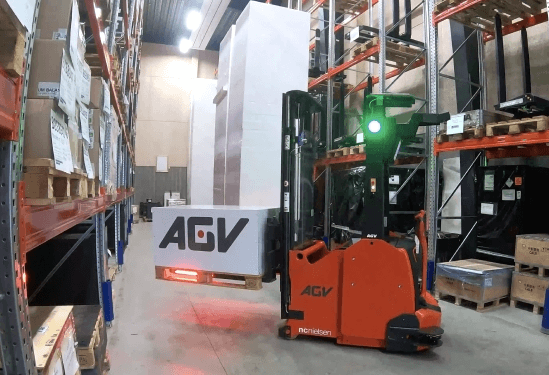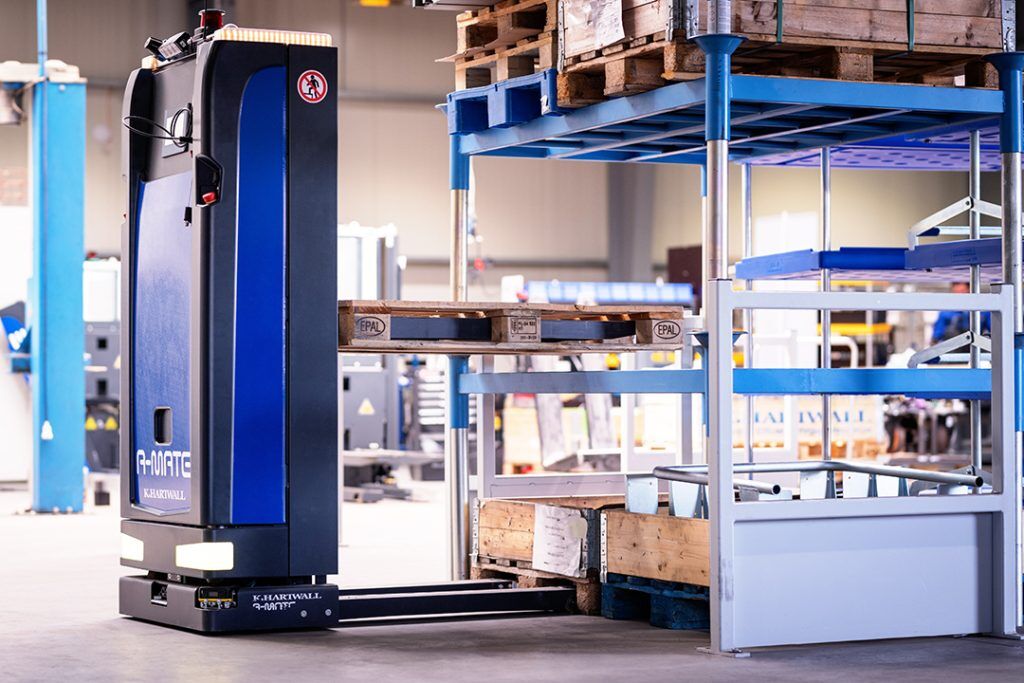Compact AGV
A Compact AGV (Automated Guided Vehicle) is a type of robotic vehicle used in industrial and warehouse settings for material handling and logistics tasks. As the name suggests, a compact AGV is designed to be small and space-efficient, making it suitable for applications where limited floor space is available or where maneuverability in tight spaces is essential.
Key characteristics and features of Compact AGVs include:
1. **Small Size:** Compact AGVs are typically smaller in size compared to other AGV types. They are designed to navigate and operate efficiently in narrow aisles, tight corners, and confined workspaces.
2. **Maneuverability:** These AGVs are known for their agility and ability to navigate through congested areas with precision. Their compact design allows them to make sharp turns and navigate around obstacles with ease.


3. **Payload Capacity:** While compact in size, these AGVs can still carry a significant payload, making them suitable for tasks that involve transporting materials, parts, or products within a facility.
4. **Navigation Systems:** Like other AGVs, compact AGVs use various navigation systems, such as laser-based guidance, magnetic tape, or vision-based technology, to navigate and follow predefined paths or operate autonomously in dynamic environments.
5. **Safety Features:** Safety is a crucial consideration for compact AGVs, and they are equipped with sensors, cameras, and collision avoidance systems to detect and avoid obstacles, ensuring safe operation in shared spaces with humans and other machinery.
6. **Versatility:** Compact AGVs can be used for a wide range of applications, including material handling, order picking, inventory replenishment, and assembly line support.
7. **Efficiency:** By automating material handling tasks in tight spaces, compact AGVs can improve operational efficiency, reduce labor costs, and optimize the use of available floor space.
8. **Integration:** These AGVs can be integrated with other automation systems, such as conveyor systems, robotic arms, and warehouse management software, to create a seamless and efficient material handling process.
Compact AGVs are well-suited for industries and facilities where space is at a premium, and there is a need to optimize the utilization of available floor space. They are commonly used in manufacturing plants, small warehouses, distribution centers, and production lines where efficient and flexible material transport is essential. Their ability to navigate in tight spaces and adapt to changing environments makes them valuable assets in modern industrial automation.
A Compact AGV (Automated Guided Vehicle) is a type of robotic vehicle used in industrial and warehouse settings for material handling and logistics tasks. As the name suggests, a compact AGV is designed to be small and space-efficient, making it suitable for applications where limited floor space is available or where maneuverability in tight spaces is essential.

Key characteristics and features of Compact AGVs include:
1. **Small Size:** Compact AGVs are typically smaller in size compared to other AGV types. They are designed to navigate and operate efficiently in narrow aisles, tight corners, and confined workspaces.
2. **Maneuverability:** These AGVs are known for their agility and ability to navigate through congested areas with precision. Their compact design allows them to make sharp turns and navigate around obstacles with ease.
3. **Payload Capacity:** While compact in size, these AGVs can still carry a significant payload, making them suitable for tasks that involve transporting materials, parts, or products within a facility.
4. **Navigation Systems:** Like other AGVs, compact AGVs use various navigation systems, such as laser-based guidance, magnetic tape, or vision-based technology, to navigate and follow predefined paths or operate autonomously in dynamic environments.
5. **Safety Features:** Safety is a crucial consideration for compact AGVs, and they are equipped with sensors, cameras, and collision avoidance systems to detect and avoid obstacles, ensuring safe operation in shared spaces with humans and other machinery.
6. **Versatility:** Compact AGVs can be used for a wide range of applications, including material handling, order picking, inventory replenishment, and assembly line support.
7. **Efficiency:** By automating material handling tasks in tight spaces, compact AGVs can improve operational efficiency, reduce labor costs, and optimize the use of available floor space.
8. **Integration:** These AGVs can be integrated with other automation systems, such as conveyor systems, robotic arms, and warehouse management software, to create a seamless and efficient material handling process.
Compact AGVs are well-suited for industries and facilities where space is at a premium, and there is a need to optimize the utilization of available floor space. They are commonly used in manufacturing plants, small warehouses, distribution centers, and production lines where efficient and flexible material transport is essential. Their ability to navigate in tight spaces and adapt to changing environments makes them valuable assets in modern industrial automation.
